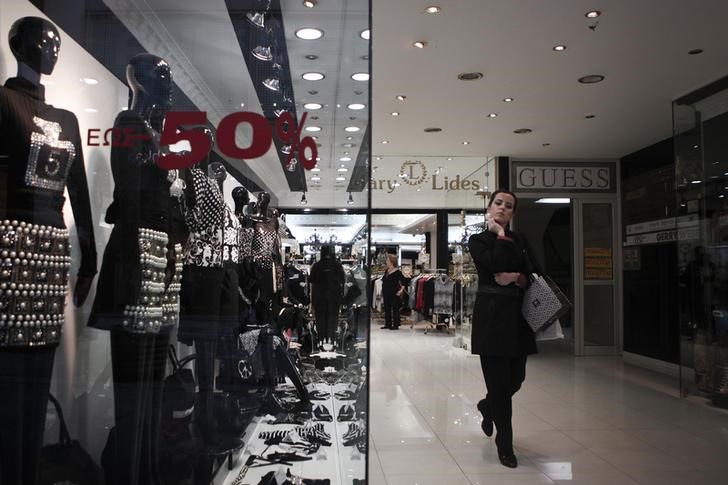By Jan Strupczewski
BRUSSELS (Reuters) - Euro zone consumer prices fell by less than expected in February while unemployment eased in January for the third month in a row, offering signs that the risks of economic stagnation and deflation in the bloc are falling.
The European Union's statistics office Eurostat estimated on Monday that consumer prices in the 19 countries sharing the euro fell 0.3 percent year-on-year in February after a 0.6 percent annual drop in the previous month. Economists polled by Reuters had expected a 0.4 percent price decline.
"A double dose of good news for the euro zone. This may dilute fears that pervasive deflation could become entrenched in the euro zone with long-term debilitating growth effects," said Howard Archer, economist at His Global Insight.
"The further drop in unemployment should be supportive to euro zone consumers and they are benefiting from the boost to their purchasing power coming from deflation."
Unemployment, usually the last indicator to react to better economic conditions, fell for the third month in a row to 11.2 percent in January from 11.3 percent in December.
Eurostat said that much cheaper energy, prices for which were 7.9 percent lower in February than a year earlier, and a 0.2 percent decline in prices of non-energy industrial goods were the main factors pulling down the overall inflation index.
Without the volatile energy and unprocessed food components, a measure the European Central Bank calls core inflation, prices grew 0.6 percent year-on-year, the same as in January.
"With oil prices gently moving higher, we forecast that the negative impact of energy price falls on headline inflation will eventually wane in the rest of the year," said Gizem Kara, economist at BNP Paribas (PARIS:BNPP).
"We expect headline inflation to remain in slight negative territory over the next couple of months, before it gently rebounds, turning back to positive territory by mid-year."
The ECB wants to keep inflation below, but close to 2 percent over the medium term. To drive it back up, it will start printing money later this month to buy euro zone government bonds, a policy known as 'quantitative easing'.

The euro zone's central bank plans to spend 60 billion euros (44 billion pounds) a month on the programme. By September next year, more than 1 trillion euros will have been created under the plan, seen as the ECB's last option for reviving growth and warding off deflation.